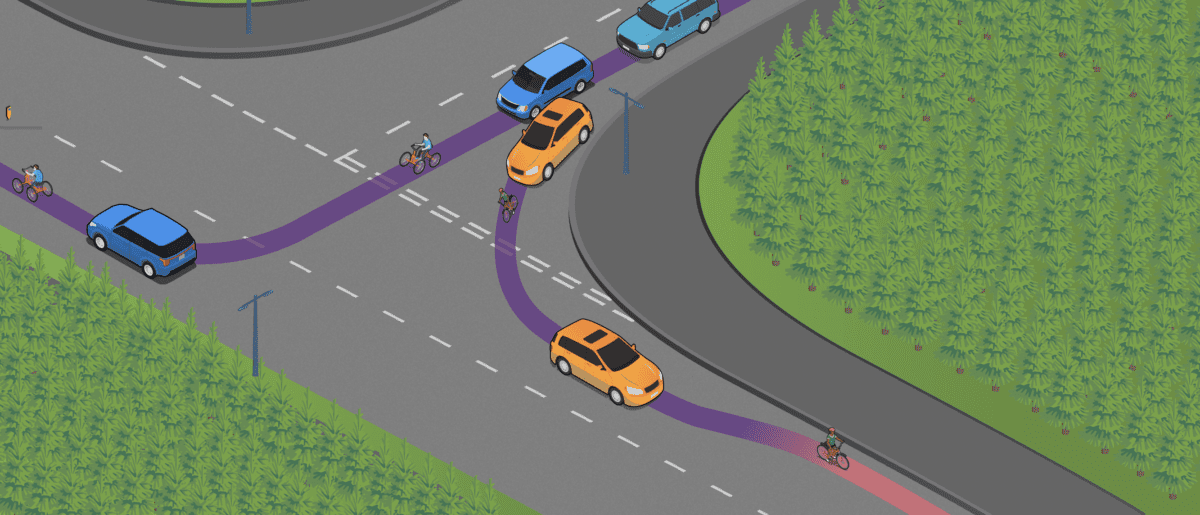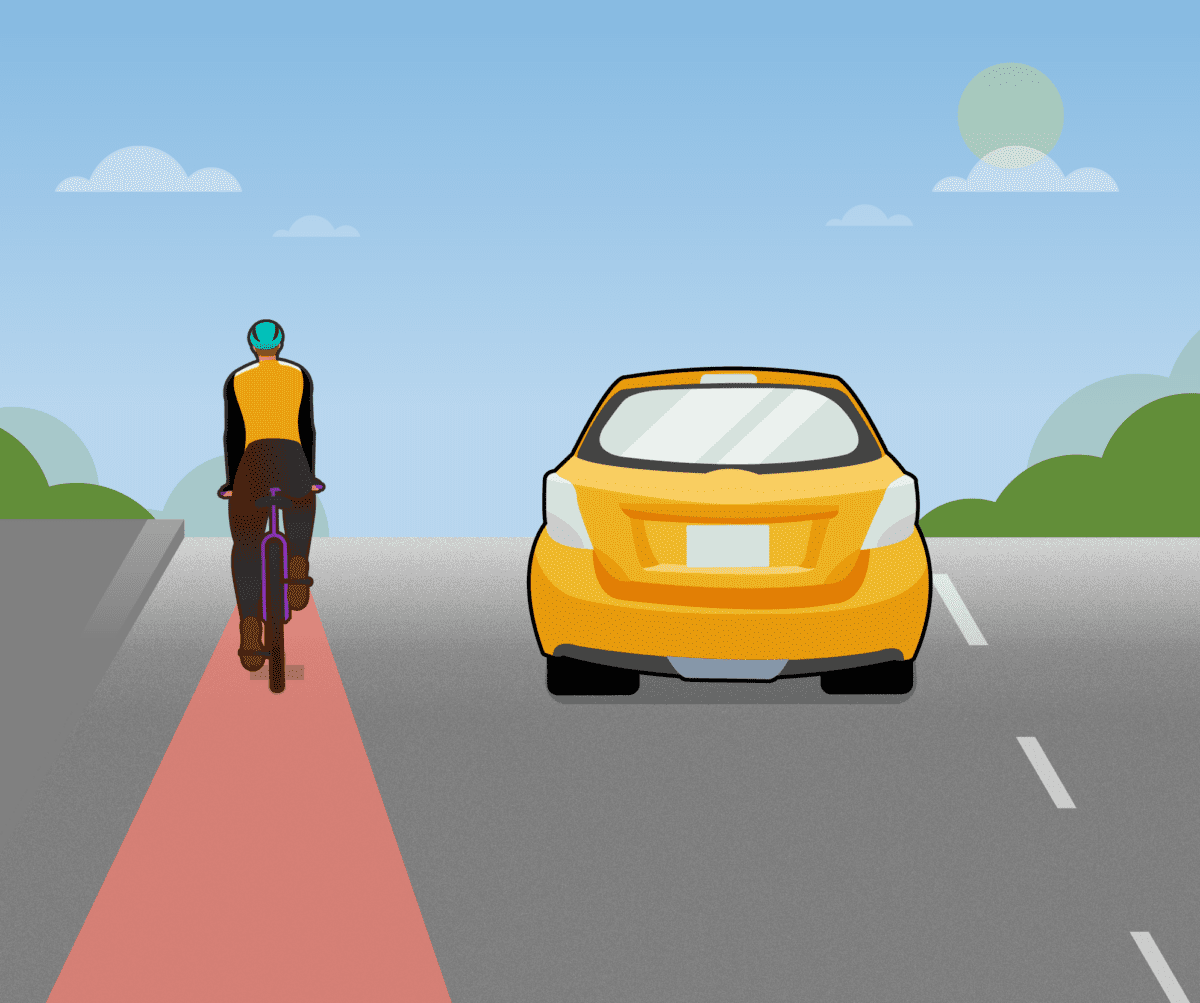3.6.5 Position: Choosing and maintaining the most appropriate place to ride
When cycling in traffic-free environments like the park, be sure to give pedestrians and other cyclists plenty of space. If you overtake them, pass them wide. In the UK, when cycling in shared, unmarked traffic-free spaces (such as along wide paths in the park), it is common practice to cycle on the left-hand side, although this is not a strict rule.
There are two main positions for cycling on road:
1. The primary position
This can be described as the ‘middle of the traffic flow’ for the direction in which you are riding. It is often referred to as the ‘middle of a lane’ though this is often not the case. Traffic flows do not always stick to lanes (for example, when cycling or driving down narrow roads with parked cars, or when turning out of very wide side roads).
You can think of the primary position as follows:
- It’s a position that you use to discourage road users from overtaking.
- It gives you a better view of the road environment around you and gives other road users better sight of you. When riding in primary position, you will be right in front of other road users.
- It’s always relative to the traffic flow (rather than lane markings). Think of it as being in the same position as where a driver’s number plate would be (most commonly) positioned in the traffic flow for your intended direction of travel. This is especially important to consider for wider roads and wide-mouthed junctions, where primary position may vary.
You could describe the primary position to your riders as ‘Follow me’, because this is what your road position tells other road users.


This shows a wide, ‘bell mouth’ junction. On the approach, both riders are in primary position, in the middle of the traffic flow for the direction they are turning. When they are on the major road, the rider turning left chooses to move to secondary position because they decide there is adequate space for a vehicle to overtake. The rider turning right chooses to stay in primary position, because the lane narrows due to a pedestrian refuge, meaning there is no space for other road users to overtake.
2. The secondary position
This can be described as a position ‘on or to the left of the traffic flow’ for the direction in which you are riding.
You can think of the secondary position as follows:
- It’s a position that allows road users behind to overtake – riding in the secondary position means you recognise that other road users are coming from behind at higher speeds.
- It’s a position that is not normally closer than an arm’s length from the edge of the road and is never ‘in the gutter’. This avoids rubbish and drains and allows the rider some space in case of a close pass.
You could describe this to your riders as ‘Pass me’, because this is what your road position tells other road users.


Negotiating the transition from secondary to primary position
Riders will need to be able to confidently switch between road positions in response to their surroundings, making the decision to allow other road users to pass, or not.
To do so effectively, riders need to plan ahead. Moving between road positions should be done when there is time and space to do so. Riders should make a judgement based on the proximity and speed of other road users.
Riders should first check behind them early to assess the time and space they have. If there is no one behind, or at a sufficient distance away, the rider has time to move without affecting them, and should move out. This can be done without a signal, and control should be prioritised.
If a rider is in a busier environment, they can control their speed and time their transition when there is sufficient space to do so, or when other road users have passed. If there is a steady stream of traffic, a rider will need to negotiate their way into the traffic flow. They can do so by looking back, making eye contact if possible and signalling if necessary.
This manoeuvre is separate from a rider signalling their intention to turn at a junction, which is normally carried out in Primary position.
